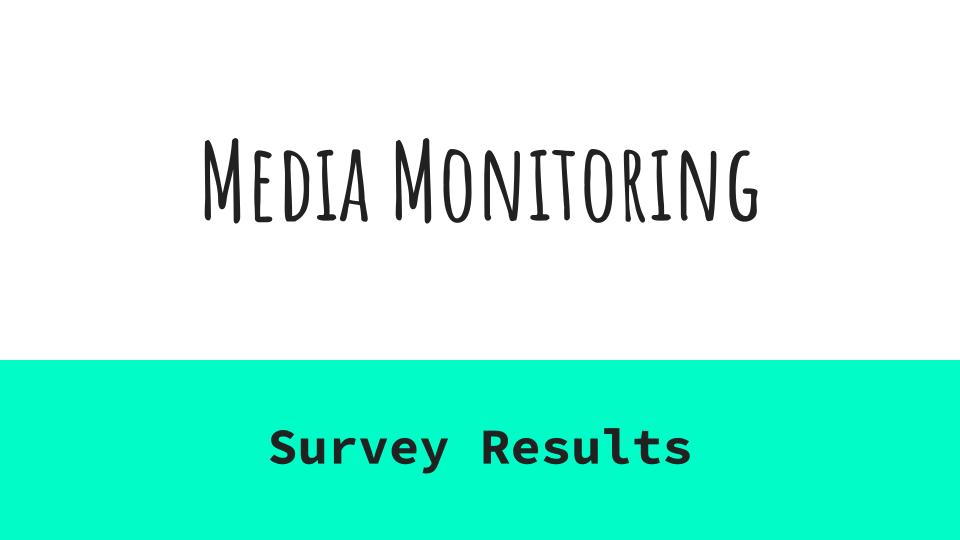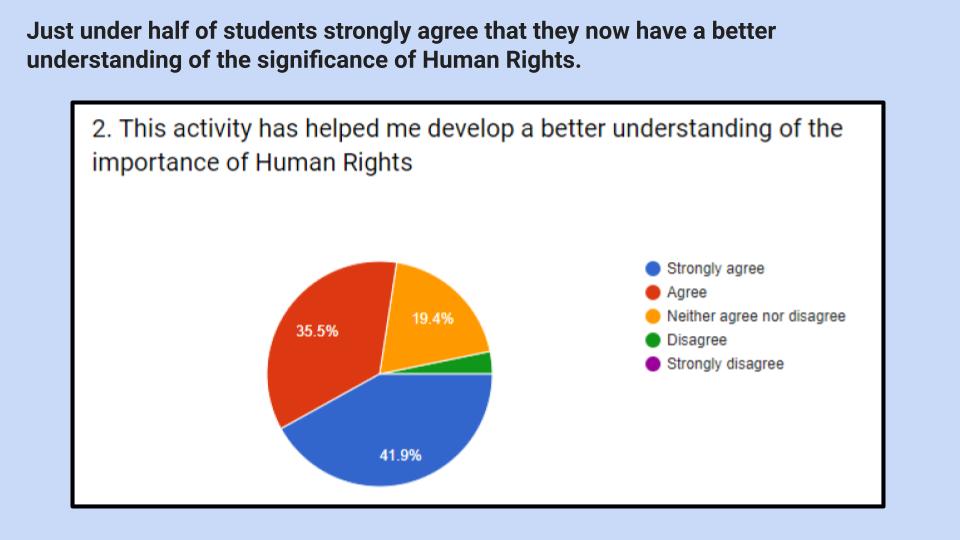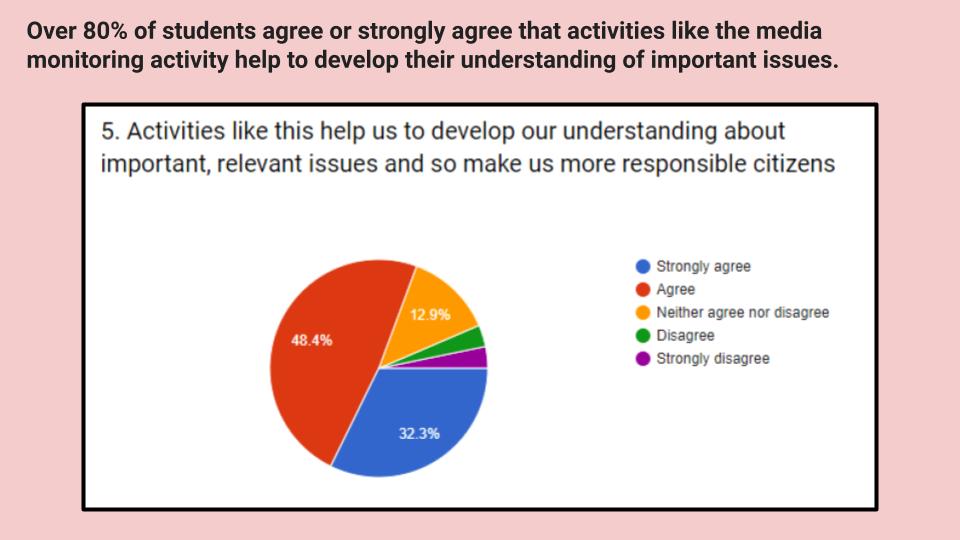Media Monitoring
The Media Monitoring activity involved students reading a series of differing media articles such as newspapers and online websites to consider how Human Rights were being displayed.
They were asked to consider how Human Rights were being practised, protected, denied or abused in the articles they read. By reading the articles they could develop their understanding of relevant news stories to become more responsible citizens at acknowledging the importance of Human Rights.

Media Monitoring Survey
At the conclusion of the Media Monitoring activity, the students involved were asked a series of questions to reflect on what they had learned.
Each slide in the presentation shows a pie chart summarising the students' responses and a concluding sentence to explain the findings.
It was pleasing to see that over 90% of students taking part agreed or strongly agreed that the Media Monitoring activity had been very useful to them as a responsible citizen.
Media Monitoring Task
Objective: To increase awareness of human rights being violated and protected in everyday life.
Task to be carried out by the students coming to Finland.
(Feel free to engage classes in your respective countries.)
Task:
Monitor selected media for reporting on human rights issues for four weeks.
Examples of possible media to be monitored:
print/net versions of newspapers
print/net versions of magazines
blogs (e.g. posts by politicians or other influential people)
podcasts
Twitter (e.g. tweets by politicians or other influential people)
Facebook (e.g. updates by politicians or other influential people)
vlogs by YouTube creators
…
A student chooses at least two sources to be followed systematically for four weeks. Observations are to be written into a log which is to include the following:
The source of the item, its author, its possible title and text type (video/audio count here as text)
The date of publication or the date the item was accessed
The topic of the article, news item, interview, opinion piece, blog entry, vlog entry, tweet etc. and an account of how it relates to human rights and which angle is prevalent: rights being practised/denied/protected/in conflict
Presenting results:
Based on their log entries, students compile four posters per country (with Padlet or Sway) highlighting The Four Angles in turn: 1. Rights being practised, 2. Rights being denied, 3. Rights being protected and 4. Rights in conflict. Details to be included in the posters are as follows:
the rights featured
the number of items found per right
the topics of the items
The source media of the items
graphics and photos to be included as space allows
the posters to be uploaded to the eTwinning site/project website
Before The European Junior Parliament Session in Finland each country presents its four posters depicting the results of their media monitoring.
Each country brings one text per Angle (video/audio being treated as “text” here) to be put in pools. One text is to be drawn from each pool to be discussed in the EJP.
Topics for EJP:
Why are there differences in human rights issues between nations?
What reasons are there for breaking human rights?
What could be / What have been the consequences of human rights violations?
What should be done so that human rights are respected?
Role play:
Students to be divided into four groups of 3-4 students. Each group devises a mini-play (5-7 min) inspired by a text/news item that interested them.
______________________________
To recap:
Monitor media for two weeks / Keep log of observations
Make Padlet/Sway-presentation of findings
Present Padlet/Sway-posters in Finland
Bring texts for EJP
Discuss human rights issues in EJP in Finland
Demonstrate point of choice in mini-play in Finland






